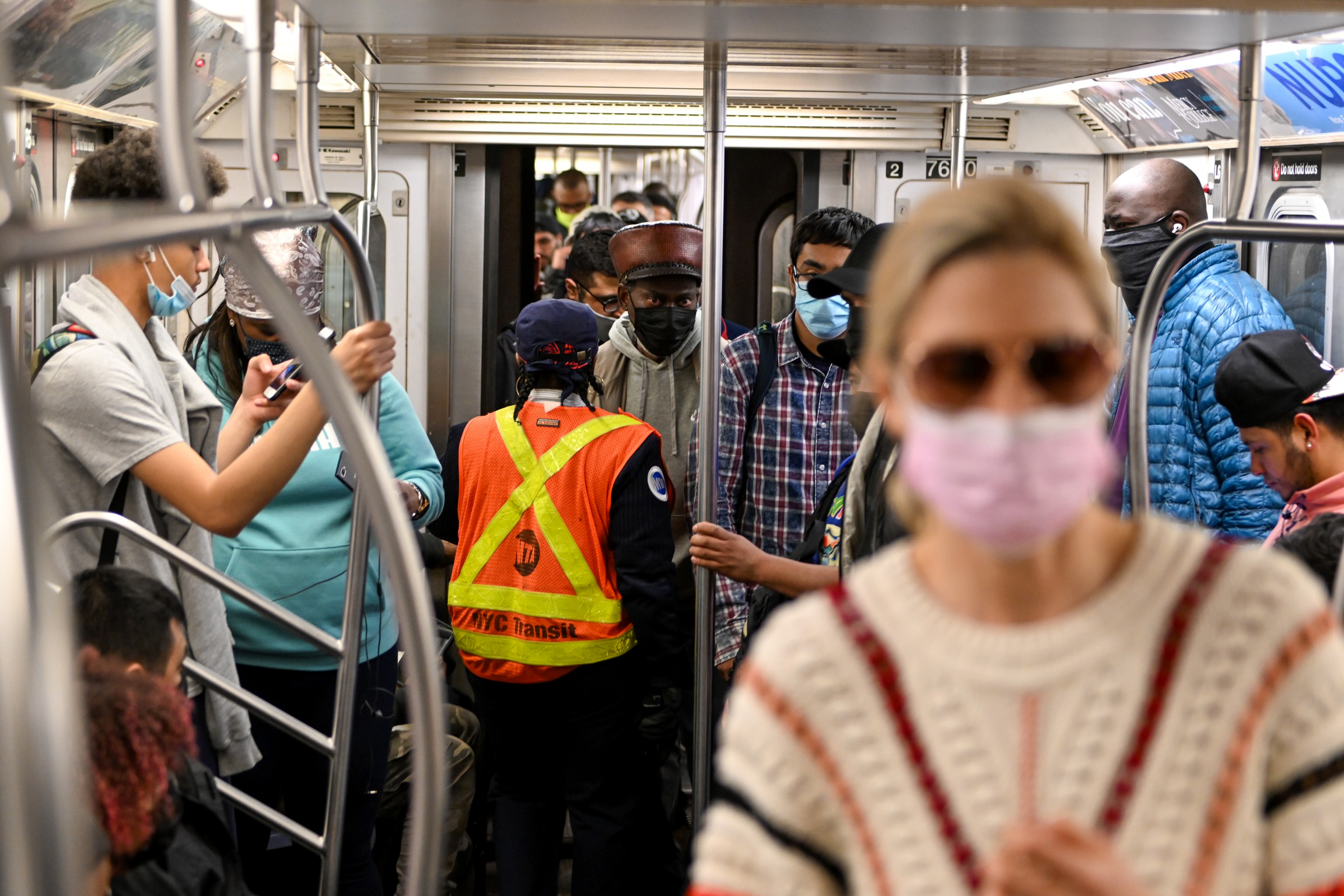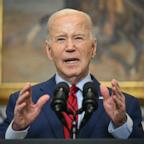Biden administration bracing for challenging fall and winter of COVID-19
Up to 30% of people could get infected, a senior administration official said.
The White House is bracing for a challenging COVID-19 surge this fall and winter that could infect up to 30% of Americans if the government can’t secure the funding for new, more targeted vaccines and ample amounts of therapeutic treatment, a senior administration official said.
The official estimated as many as 100 million Americans could become infected with coronavirus over the course of three or four months during the fall and winter. The prediction would amount to about 30-40 million fewer infections than the omicron surge was and is expected to stretch out over a longer time period, the official said, but is still a significant warning.
If funding for vaccines and therapeutics is secured, though, the official predicted there would be a far better chance of blunting the expected surge and keeping deaths and hospitalizations down.
Most experts agree that the fall and winter will bring a surge of cases, but dismiss predictions that portend to know the severity or specificity this far out.
“I think it's difficult, if not impossible, to predict the future of this virus,” said David Dowdy, an infectious disease epidemiologist at Johns Hopkins Bloomberg School of Public Health.
The prediction, based on a combination of modeling from outside experts, is just one of many potential scenarios, the official cautioned. It's very early to predict the fall or winter with such specific certainty and throughout the pandemic, attempts to do so have frequently missed the mark.

The estimation also doesn’t account for the possibility that a new variant will change the country’s trajectory — a scenario that can’t be ruled out given how quickly the virus has mutated in just the last few weeks.
It comes as the White House is negotiating funding on Capitol Hill, attempting to secure $22.5 billion from Congress in COVID relief but running into stalemates with Republicans. The starkly specific prediction was likely yet another push for Congress to move forward on those efforts, or risk a harsh fall and winter.
A wave this fall is “absolutely” possible, but it’s also possible that the current level of infection circulating gives enough immunity to protect against overwhelming numbers of hospitalizations or death, Dowdy said.
“All to say, I don't think we should be sounding alarm bells about inevitable future waves. But neither should we be declaring this pandemic over,” Dowdy said.
Dr. John Brownstein, an epidemiologist at Boston Children's Hospital and an ABC News contributor, said he thinks there's “very firm ground to say that we’ll experience a surge."
But the big question: "What does that translate into?” he said.
“And I think that is unknown because it's really dependent on what is circulating and what immunity we have in the population that creates that protection,” Brownstein said.
He noted that the country has seen a surge every three to six months since the pandemic began — but that predicting the exact parameters of those surges has been next to impossible.
Dr. Robert Wachter, chair of the department of medicine at the University of California, San Francisco, was similarly hesitant about the specifics, calling the prediction of 100 million infections “unknowable” but “plausible.”
“We’ve learned we’re not very good at making projections,” he cautioned.
Still, he expects an increase of infections this fall and winter, and didn't put much stock in immunity from the omicron wave, which infected nearly 40% of the population, protecting against a new surge.
“The immunity that an unvaccinated or partially vaccinated person had from an omicron infection in January will largely be irrelevant in the face of a threat next December,” Wachter said, citing reinfections that are already occurring about three months out.
The question, Wachter said, is more about decoupling — whether cases can spread without leading to a tragic number of hospitalizations or deaths, and disruption to school or work.
One way to protect against that is through vaccines, like the vaccines the FDA is preparing to review in June that could protect against newer variants, or therapeutics like Paxlovid, which reduces the risk of death by 90%.
The government doesn't have the funding to purchase those vaccines for this fall and expects to run out of Paxlovid around October.
"Funding from Congress will markedly increase the likelihood that we don't get creamed," Wachter said. "It could make the difference between really terrible and just bad."
In negotiations on the Hill, a senior administration official said the potential for 100 million infections, affecting nearly one in three Americans, has been conveyed to Republicans.
The message from the White House is that waves will keep coming, but the goal is to be able to weather them with vaccines and treatments that take away much of the risk for death.
The official said those conversations have been a battle, but the White House remains optimistic.
ABC News' Arielle Mitropoulos contributed to this report.




